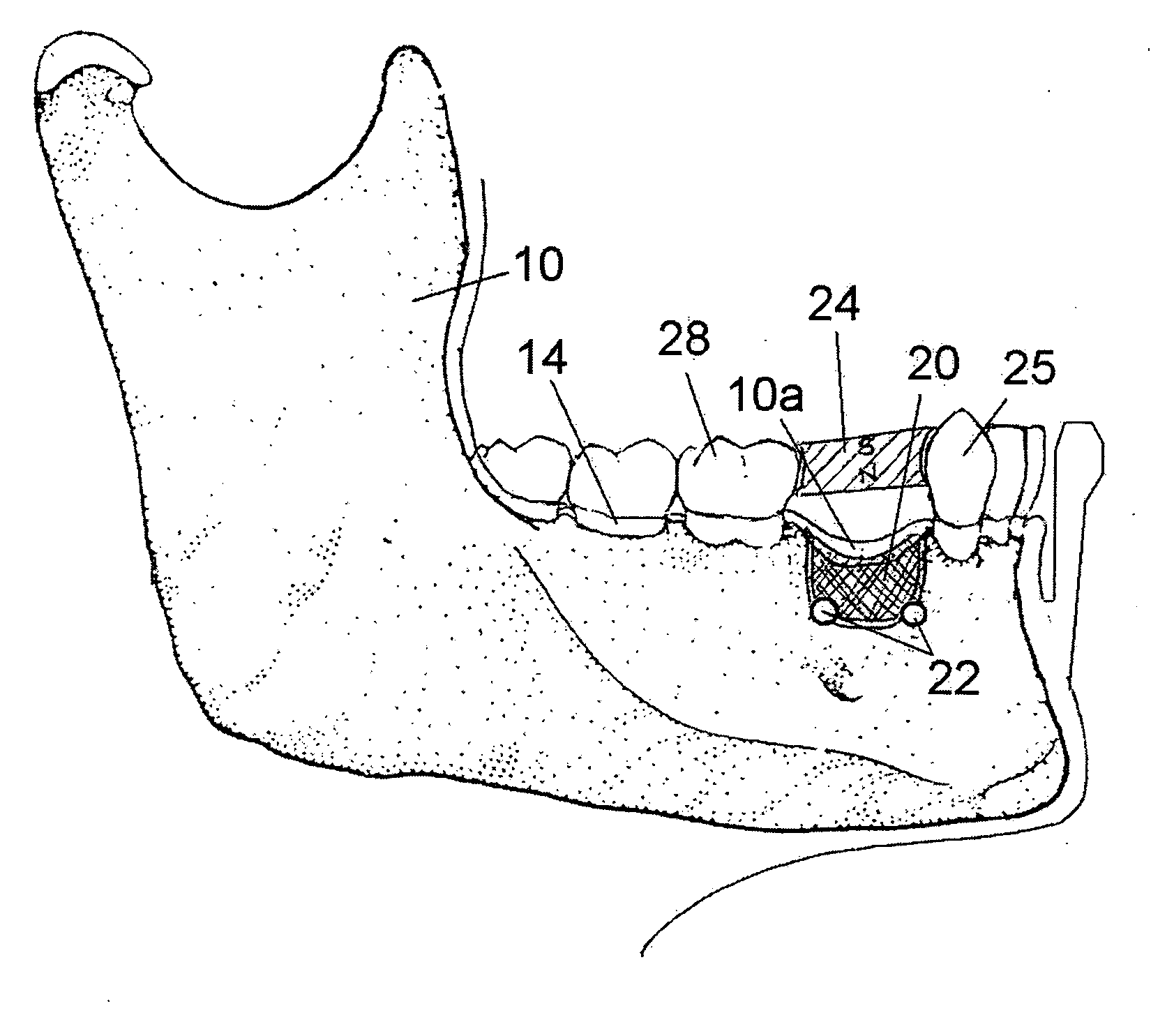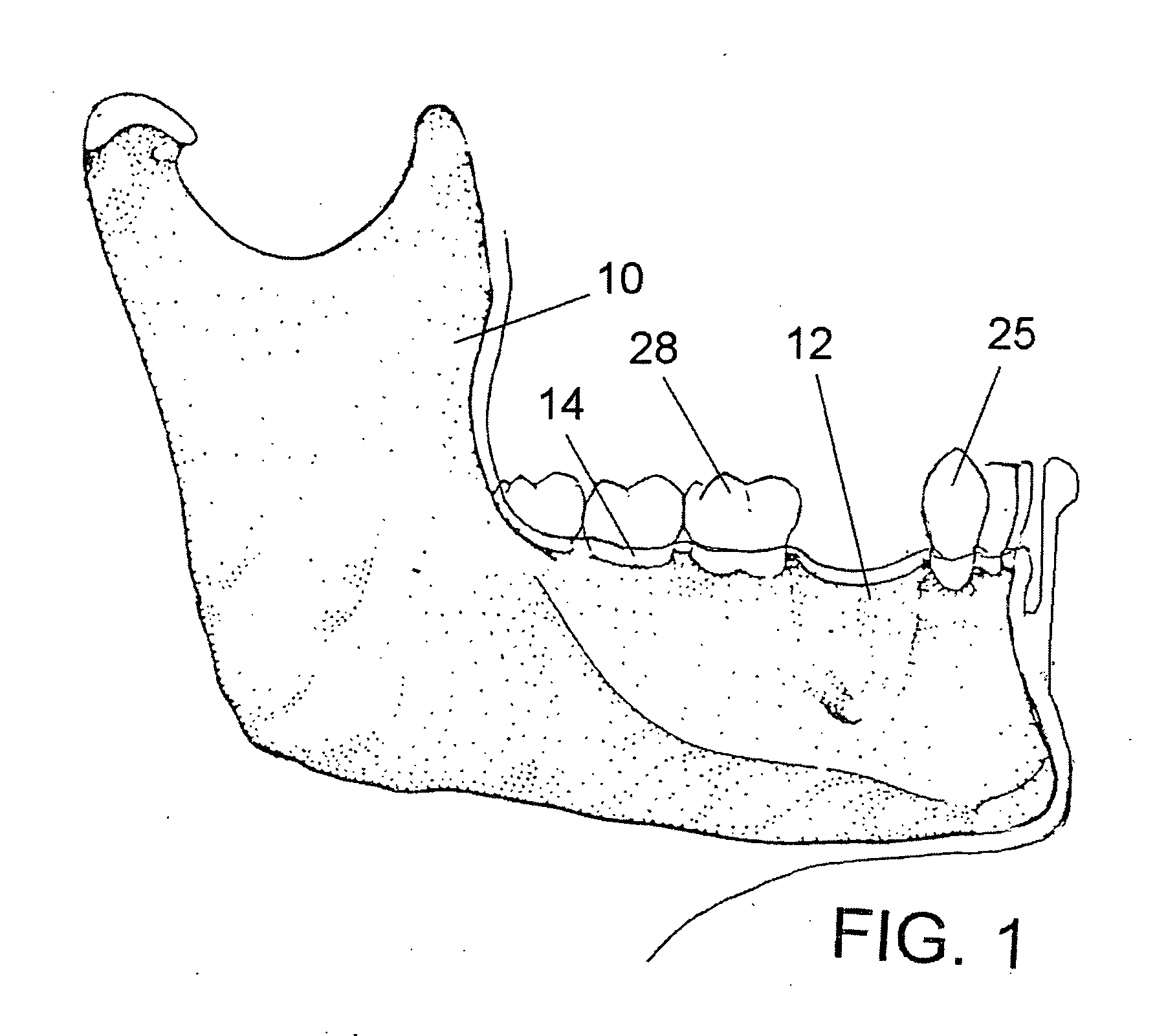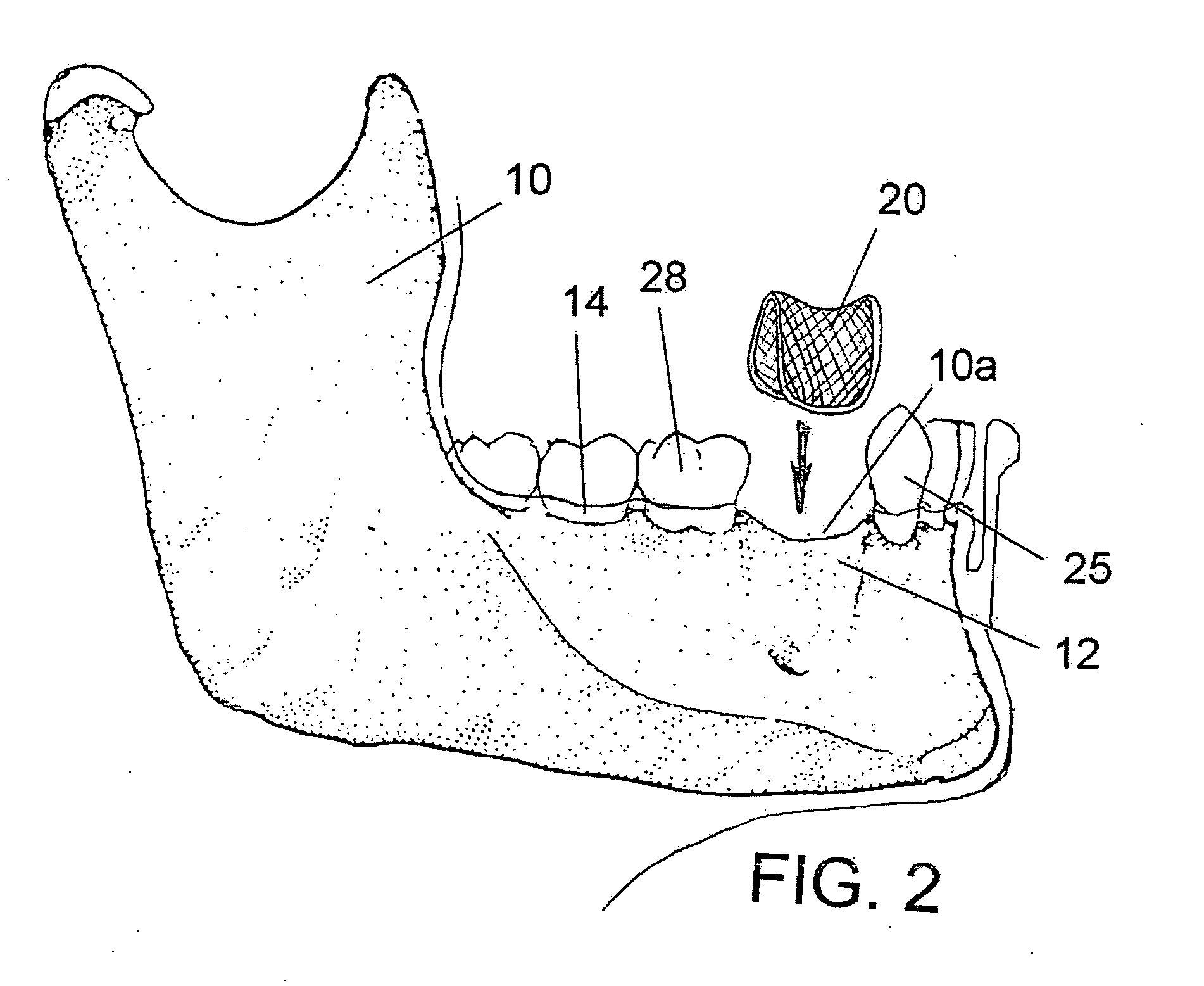Periosteal distraction bone growth
a distraction bone and periosteal technology, applied in the field of osteogenesis (bone growth), can solve the problems of not being able to teach not being able to induce normal occlusal bone growth, and patently not teaching a magnetically reactive material embedded subperiostally
- Summary
- Abstract
- Description
- Claims
- Application Information
AI Technical Summary
Benefits of technology
Problems solved by technology
Method used
Image
Examples
Embodiment Construction
[0040] Referring now to the drawings, in which like reference numerals are used to refer to the same or similar elements, FIG. 1 illustrates a jawbone 10 with some teeth, in particular tooth number 25 and tooth number 28 having an edentulous or toothless area 12 therebetween. Gingival tissue or gum 14 covers the jawbone and edentulous area and surrounds the teeth in usual fashion. As is know, the jawbone in area 12 tends to shrink or recede after the teeth (numbers 26 and 27, not shown) have been lost. If a dental implant is desired in area 12 to replace the missing teeth, however, a certain minimum amount of bone must be present.
[0041] According to the present invention, bone can be induced to grown occlusally, that is outwardly and normally to the crest surface of the jawbone.
[0042] Referring to FIG. 2, the periosteal distraction osteogenesis method of the invention comprises cutting and temporally lifting a flap of gingiva from the edentulous area 12 to expose a portion 10a of ...
PUM
 Login to View More
Login to View More Abstract
Description
Claims
Application Information
 Login to View More
Login to View More - R&D
- Intellectual Property
- Life Sciences
- Materials
- Tech Scout
- Unparalleled Data Quality
- Higher Quality Content
- 60% Fewer Hallucinations
Browse by: Latest US Patents, China's latest patents, Technical Efficacy Thesaurus, Application Domain, Technology Topic, Popular Technical Reports.
© 2025 PatSnap. All rights reserved.Legal|Privacy policy|Modern Slavery Act Transparency Statement|Sitemap|About US| Contact US: help@patsnap.com



